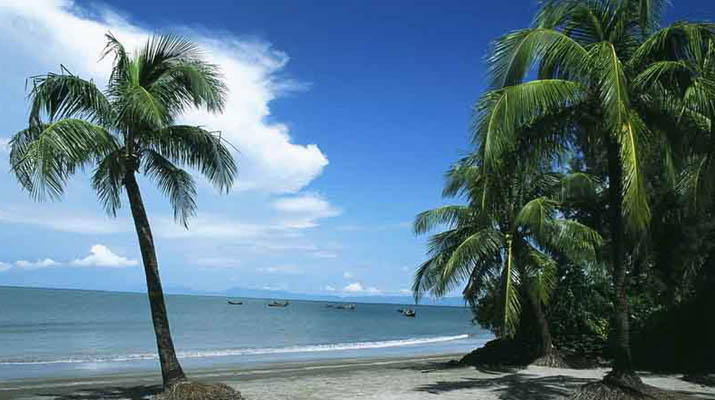- Details
- Hits: 13585
St. Martin's Island
St. Martin's Island is a small island (area only 8 km2) in the northeastern part of the Bay of Bengal, about 9 km south of the tip of the Cox's Bazar-Teknaf peninsula, and forming the southernmost part of Bangladesh. There is a small adjoining island that is separated at high tide, called Chhera island. It is about 8 km west of the northwest coast of Myanmar, at the mouth of the Naf River. The first settlement started just 250 years ago by some Arabian sailors who named the island ‘Zajira’. During British occupation the island was named St. Martin Island. The local names of the island are "Narical Gingira", also spelled "Narikel Jinjira/Jinjera", which means 'Coconut Island' in Bengali, and "Daruchini Dwip". It is the only coral island in Bangladesh.From 1989 to 2004, non-residential Bangladeshis and foreigners were the only people permitted on the island; however, this has changed and now residential Bangladeshis are allowed. St. Martin's Island has become a popular tourist spot. Currently, five shipping liners run daily trips to the island, including Shahid Sher Niabat, L C T Kutubdia, Eagle, Keari Cruise & Dine and Keari-Sindbad. Tourists can book their trip either from Chittagong or from Cox's Bazar. The surrounding coral reef of the island has an extension named Chera Dwip. A small bush is there, which is the only green part of Chera Dwip, enhancing the beauty of this island. People do not live on this part of the island, so it is advisable for the tourists to go there early and come back by afternoon.In the past five years St. Martin's visitor population has increased dramatically. While this situation has proven to be lucrative for the islanders, it is causing the natural beauty of the island to deteriorate. Presently there are many efforts being put forth to preserve the several endangered species of turtles that nest on the island, as well as the corals, some of which are found only on Narikel Jinjera. Pieces of the coral reef are being removed in order to be sold to tourists. Nesting turtles are sometimes taken for food, and their hatchlings are often distracted by the twinkling lights along the beach. Species of fish, a few just recently discovered, are being overfished. Every year the fishermen must venture further out to sea to get their catch. Most of them use motorless boats.It is possible to walk around the island in a day because it measures only 8 km2 (3 sq. mile), shrinking to about 5 km2 (2 sq. mi) during high tide. The island exists only because of its coral base, so removal of that coral risks erosion of the beaches. Because of this, St. Martin's has lost roughly 25% of its coral reef in the past seven years.

